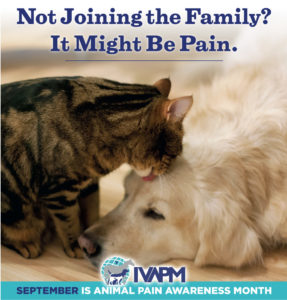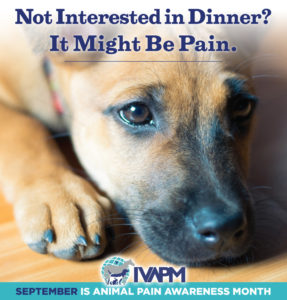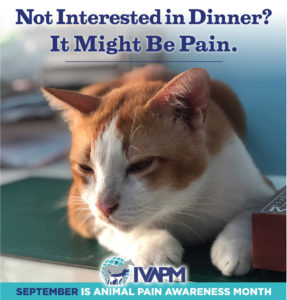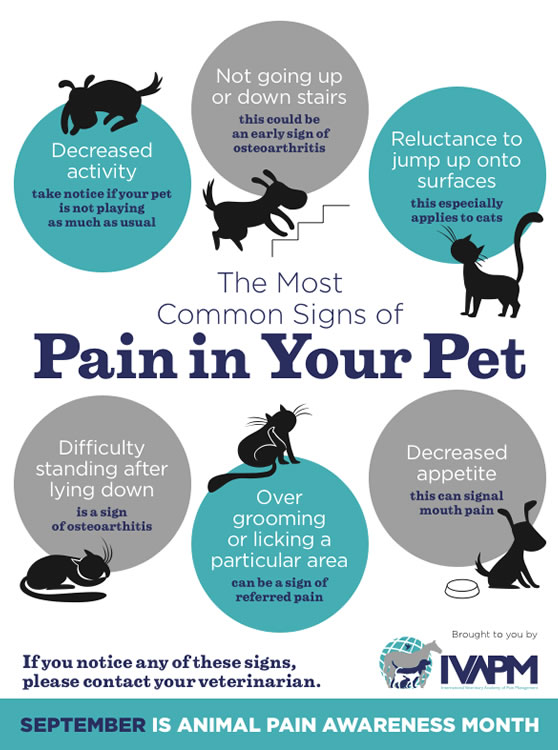 September is Animal Pain Awareness Month, during which time the International Veterinary Academy of Pain Management educates pet parents on signs of pain in their companion animals. As providers of pet hospice at home, Heaven at Home would like to take this opportunity to help pet parents ensure that their cats and dogs do not suffer needlessly as they age. Our hospice veterinarians are available for Quality of Life telemedicine consultations to help pet parents evaluate pain in their senior pets.
September is Animal Pain Awareness Month, during which time the International Veterinary Academy of Pain Management educates pet parents on signs of pain in their companion animals. As providers of pet hospice at home, Heaven at Home would like to take this opportunity to help pet parents ensure that their cats and dogs do not suffer needlessly as they age. Our hospice veterinarians are available for Quality of Life telemedicine consultations to help pet parents evaluate pain in their senior pets.
Can you imagine not being able to tell your doctor that you were in pain? Animals suffer from pain just like we do. Pain comes in many forms: surgical pain, arthritis, and cancer, just to name a few. Acute pain is obvious and distressing. Chronic pain can be subtle, and masked as “getting old” or “slowing down.” Age is not a disease, but pain is. There are many options to treat the various causes of pain in animals including pain medications, physical rehabilitation, and acupuncture. In addition, there are many environmental strategies that can help reduce pain, such as slip-proof and padded flooring, altered-height feeding, ramps, and other supports.
Contact us if you’d like assistance identifying and managing pain in your aging pet. Here are some of the key signs to watch for:
 Common Signs of Pain in Dogs
Common Signs of Pain in Dogs
- Decreased social interaction
- Anxious expression
- Submissive behavior
- Refusal to move
- Whimpering
- Howling
- Growling
- Guarding behavior
- Aggression; biting
- Decreased appetite
- Self-mutilation (chewing)
- Changes in posture
 Common Signs of Pain in Cats
Common Signs of Pain in Cats
- Reduced activity
- Loss of appetite
- Quiet/loss of curiosity
- Changes in urinary/defecation habits
- Hiding
- Hissing or spitting
- Lack of agility/jumping
- Excessive licking/grooming
- Stiff posture/gait
- Guarding behavior
- Stops grooming/matted fur
- Tail flicking
- Weight loss
Download or Share this Poster that illustrates Signs of Pain in Pets
(Click on the image to download)

